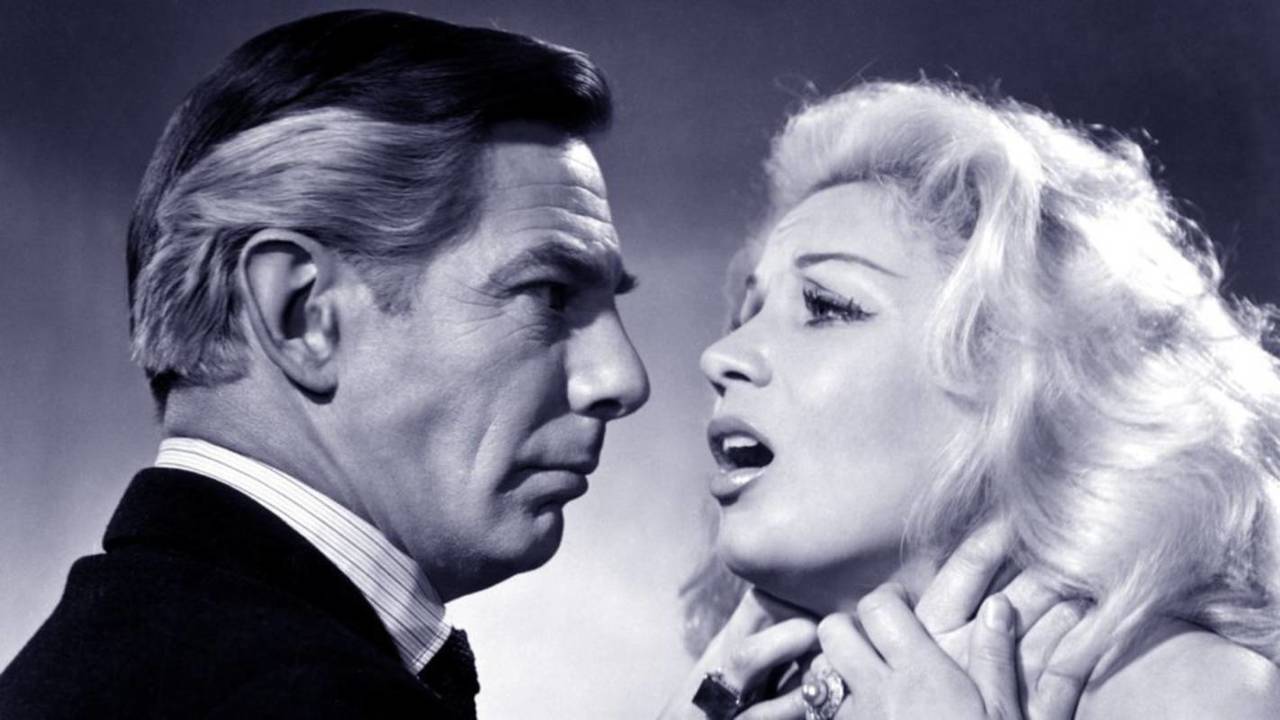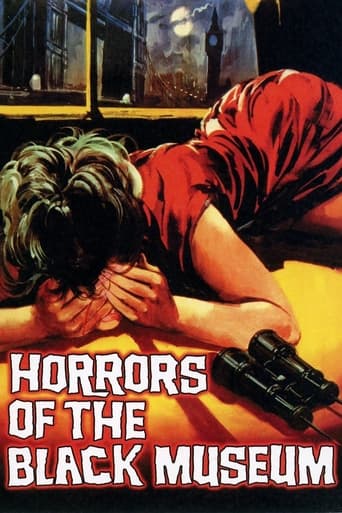

Purely Joyful Movie!
... View MoreThe biggest problem with this movie is it’s a little better than you think it might be, which somehow makes it worse. As in, it takes itself a bit too seriously, which makes most of the movie feel kind of dull.
... View MoreAfter playing with our expectations, this turns out to be a very different sort of film.
... View MoreThe plot isn't so bad, but the pace of storytelling is too slow which makes people bored. Certain moments are so obvious and unnecessary for the main plot. I would've fast-forwarded those moments if it was an online streaming. The ending looks like implying a sequel, not sure if this movie will get one
... View MoreIs it forever Michael Gough's fate to play crippled characters? With his hand-less performance in DR TERROR'S HOUSE OF HORRORS, his wheelchair-bound role in HORROR HOSPITAL, and now this cane-assisted stance in HORRORS OF THE BLACK MUSEUM, it seems this unfortunate actor always comes off the worst. But I digress. HORRORS OF THE BLACK MUSEUM is a classic example of an early exploitation film, produced by non less than Herman Cohen, responsible for loads of classic films of this type in the late '50s/early '60s. With an off beat and clever idea (crime writer commits murder to sell his stories) and a twist monster-on-the-loose ending (with Cohen involved, what else would you expect?), the film never fails to entertain.Chief entertainment comes from the series of murders, which, while not explicitly gory like the Friday the 13th films, are however all staged elaborately and decoratively, and also cleverly, with much relish, like the murders in THEATRE OF BLOOD and the PHIBES films (but never so campy!). Highlights include the memorable binocular death and a woman having her head cut off by an axe, but the best death (or tackiest) occurs when the doctor is electrocuted by a bad special effect, then has his skin boiled off and becomes a skeleton! This scene is a piece of classic horror and easily the best moment of the film.Although the monster makeup leaves something to be desired (it basically looks like grey paint), there is a good scene with the monster in a hall of mirrors, where he is taunted by a young couple before turning on them with a knife! While none of the acting is sub-par, with the likes of Shirley Anne Field involved (also, Geoffrey Keen has a role as a tough policeman), the film really belongs to Michael Gough as the criminal genius. He also sports the same ridiculous bleached hair as he did in the next year's KONGA! Gough is superbly civilised and a man of true evil, much like in his other films, and as always he's a delight to watch, I'm surprised that this prolific actor is overlooked so much and in the shadow of contemporaries like Cushing and Lee but he always puts in a solid, tongue in cheek performance and raises the level of the films he's in (much like Peter Cushing did). HORRORS OF THE BLACK MUSEUM is a typical piece of '50s exploitation, much in the style of CIRCUS OF HORRORS and is a film which is raised above average by the strength of Gough's performance alone. Definitely one for the collection.
... View MoreIt's a shame, really: with a delightfully lurid and catchy title such as "Horrors of the Black Museum" and advertising that hyped a special "Hypno-Vista" process, this could and should have been more fun. It's reasonably amusing, but its good moments are spread pretty far apart amid a lot of talk and a slow pace (even so, the movie only runs 79 minutes long).Fiendish murders are plaguing the city of London, and prominent crime expert / journalist Edmond Bancroft (Michael Gough) just loves it to write about it. He definitely has a flair for the sensational. This sets him at odds with the weary Scotland Yard detectives investigating the case, including Superintendent Graham (Geoffrey Keen, whom one may recognize from his appearances in several James Bond franchise entries) and Inspector Lodge (John Warwick).The movie can boast a couple of nifty gadgets: binoculars that shoot needles into unwary eyes, a pair of ice tongs, and a miniature guillotine. The title derives from the collection kept by the Yard of hideous murder implements; Bancroft also maintains an impressive collection of his own.Helping to make this little horror film palatable are gorgeous CinemaScope photography and an excellent cast also including June Cunningham as Bancrofts' fed-up girlfriend, Graham Curnow as his loyal assistant Rick, the lovely Shirley Anne Field as Ricks' gal pal Angela, Beatrice Varley as shop keeper Aggie, and Austin Trevor as Commissioner Wayne. But Gough, not surprisingly, thoroughly dominates the proceedings with a delicious hammy performance. One could never accuse Gough of not giving a role 100% percent, and he doesn't disappoint here.Overall, this is a mild diversion and no more.Six out of 10.
... View MoreAs another reviewer mentioned, this film was horrifying to those of us who saw it as kids when it first came out. Horrors of the Black Museum was produced before technical effects became morph-driven and so fake they're not believable (even though they might be scary). Unlike Fiend Without a Face (also mentioned in these reviews) or The Blob, this movie doesn't rely on mechanically produced monsters. which means an imaginative child or paranoid adult could perhaps picture its horrors actually happening. A stretch, surely, but still . . .Pre-movie sequence demonstrating colors and hypnosis was funny and hokey even when the film was first released. The horrors, however, had many children (me included) suffering from nightmares for years. The binocular scene was particularly frightening, but not as frightening as the beheading scene. I cautiously checked the tall bedroom ceiling in the old farmhouse where I grew up for a long while after seeing this flick.Overall, after getting over the heebie-jeebies that lingered for years afterward, I have fond memories of this film. Anyone who is a fan of the 1950s chiller genre might enjoy the dated look and feel of it as well as the scare-factor it can generate in a viewer.
... View MoreMichael Gough, with a limp and a silver-headed cane, plus a dramatic white streak in his hair, and honing the accent he would use decades later as Alfred, the butler, in BATMAN, hobbles around London as crime historian Edmond Bancroft, inspired by Edgar Lustgarten, who hosted numerous true-crime films between 1953 and 1967. Bancroft's cellar houses a cheesy private version of Scotland Yard's "Black Museum", the original of which he disparages as containing only souvenirs of "dead" crimes. Bancroft's includes the instruments of unsolved killings - understandable, since he's instigating them. Using a vaguely explained electronic mechanism, he induces super strength in his meek assistant (Graham Curnow)before sending him out to commit the murders which provide him with material. The film's best scenes involve veteran Beatrice Varley as Aggie, the junk-shop dealer who sells Bancroft the knives, axes etc with which the crimes are committed, but, when she tries to blackmail him, is herself despatched with a set of iceman's steel tongs. Effective use of CinemaScope by ex-cinematographer Arthur Crabtree, who retired from film-making after this production.
... View More